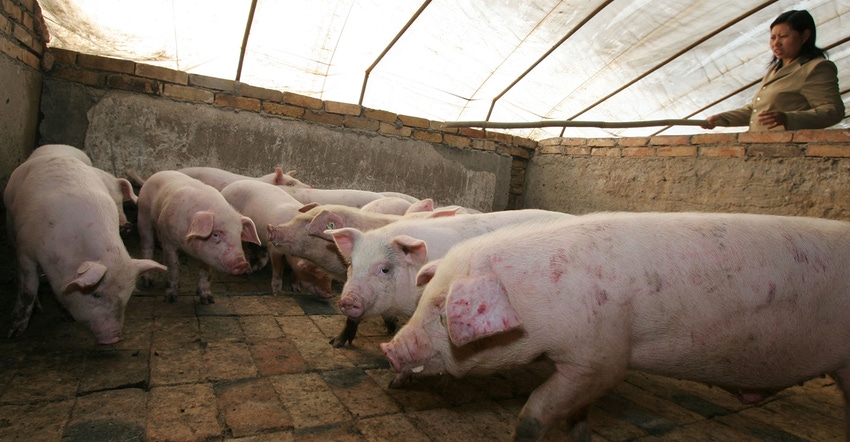Have you heard of variant Chinese pseudorabies?
The variant strain of Chinese pseudorabies emerged in vaccinated farms and continues to spread, perplex swine researchers.

I'm not really a gambler, but I would be willing to wager you would be hard pressed these days to attend a swine industry meeting and not hear the words African swine fever. It's definitely top of mind for the global pork industry as it rightly should be. Scientists are now estimating that a quarter of the world's pigs could be wiped out from the highly contagious hemorrhagic viral disease.
However, when one of our industry's leading researchers on ASF transmission in feed took a break from discussing the virus at South Dakota State University's Swine Day to focus on another one that is concerning her, my ears perked up.
Pseudorabies is another virus Megan Niederwerder is allowed to work with at Kansas State University's biosafety level 3 facility and the assistant professor of diagnostic medicine and pathobiology in the College of Veterinary Medicine, says it's a variant strain of Chinese pseudorabies, HeN1, that has her worried.
"Historically, China has had classic pseudorabies which is what previously circulated in the United States until it was eradicated from U.S. commercial swine in 2004. But since 2011, a variant strain of pseudorabies emerged in China which seems to have higher morbidity, higher mortality," Niederwerder says. "They also detected it in herds that were vaccinated with the Bartha-K61 strain, which had historically protected pigs against pseudorabies."
In 2013, one of the first publications came out documenting this new variant strain of Chinese pseudorabies and soon after it emerged in about nine provinces in China. A more-recent publication shows that the variant strains can now be found in more than 20 provinces.
"The variant strain of pseudorabies virus seems to be spreading throughout China and the Bartha vaccine strain does not seem to be as protective against this variant strain of Chinese pseudorabies," Niederwerder says.
Niederwerder says there are risks that this new pseudorabies may be introduced into other parts of the world where naïve pigs would be highly susceptible to disease and that there are concerns that pseudorabies has the potential to be considered a zoonotic pathogen.
"Pseudorabies is a herpesvirus. It can affect dogs and cats, many different mammalian species, but historically humans have been considered resistant to infection with sporadic cases reported," Niederwerder says.
Niederwerder says the emerging infectious disease should be on the global swine industry's radar and that the risks for virus introduction should be investigated for prevention strategies.
In addition to ASFV, HeN1 and classical swine fever are two viruses Niederwerder is currently studying at K-State on their ability to survive in feed ingredients subjected to environmental conditions simulating transoceanic shipment. She hopes to have that research published before the end of the year.
About the Author(s)
You May Also Like





